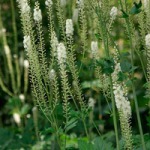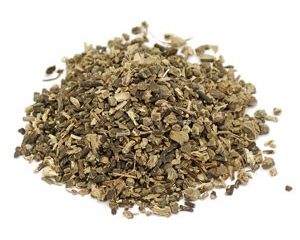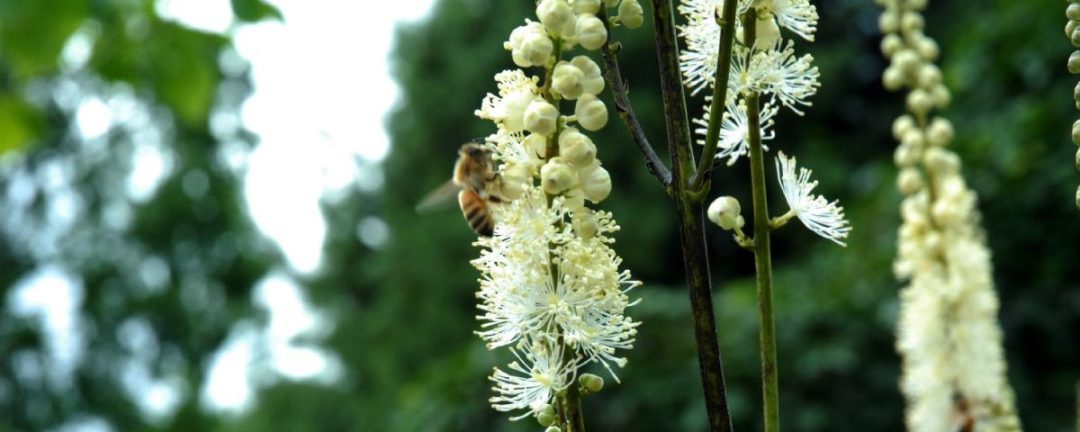Black cohosh balances hormone levels in both men and women. Historically it was used for aches and pains, sore throat, and bronchitis. A tincture was also used as a sedative, and to treat fever and snakebite. The most important use of black cohosh is in maintaining the therapeutic response to estrogen replacement therapy (ERT) as ERT is gradually withdrawn. The herb is also useful in the treatment of stress-related symptoms during menopause and premenstrual syndrome (PMS) if psychoactive medications cause intolerable side effects. Black cohosh also nourishes the respiratory system and soothes a sore throat. It has been approved by the German Commission E for female sexual dysfunction and PMS.
Botanical Name
Cimicifuga racemosa
Part Used
Root
Common Names
Battle weed, big snakeroot, Bugbane; black snakeroot, blueberry, blue ginseng, bugwort, cohosh, columbine leaved leontice, cordate rattletop, fairy candles, false cohosh, heart-leaved rattle-top, hearth-leaved snakeroot, meadow rue leontice, papoose root, rattle root, rattlesnake root, rattle root, rattle- top, rattleweed, richweed, squaw root, squaw weed, star lance, tall snakeroot, yellow ginseng.
Brief History
 The botanical name cimicifuga is Latin for “bug repellent”. The herb was named black because of its dark medicinal roots. The name cohosh comes from an Algonquian word meaning “rough,” a reference to the feel of the rhizome when handled. The species name is from the Latin meaning full of flowers. Because of the hard, knotty, twisted shape of the root comes the name of “black snakeroot”. Originally used by the Native Americans for fatigue, sore throat, arthritis, rattlesnake bite and primarily for gynaecological problems and childbirth, it was introduced to the medical world in 1944 by Dr. John King for rheumatism and nervous disorders, and it became a favourite herb with the Eclectics medical practitioners. It was widely used to treat scarlet fever, whooping cough, smallpox and all “hysterical” (gynaecological) ailments.
The botanical name cimicifuga is Latin for “bug repellent”. The herb was named black because of its dark medicinal roots. The name cohosh comes from an Algonquian word meaning “rough,” a reference to the feel of the rhizome when handled. The species name is from the Latin meaning full of flowers. Because of the hard, knotty, twisted shape of the root comes the name of “black snakeroot”. Originally used by the Native Americans for fatigue, sore throat, arthritis, rattlesnake bite and primarily for gynaecological problems and childbirth, it was introduced to the medical world in 1944 by Dr. John King for rheumatism and nervous disorders, and it became a favourite herb with the Eclectics medical practitioners. It was widely used to treat scarlet fever, whooping cough, smallpox and all “hysterical” (gynaecological) ailments.
Constituents
Therapeutic Properties
Uterine tonic, sedative, oestrogen receptor modulating, emmenagogue, antirheumatic, anti-inflammatory, antitussive, CNS depressor, vasodilatory, antispasmodic, hormone modulator (suppresses LH secretion; oestrogen-like effect), hypothalamic-pituitary-ovarian regulator, apoptosis inducer.
Vitalist Properties
Temperature: Cool
Moisture: Dry
Therapeutic Indications
Arthritis, osteoarthritis, rheumatoid arthritis, pertussis, bronchitis, tinnitus, chorea, neuralgia, hypertension, endometriosis, fibroids, polycystic ovarian syndrome, menopausal symptoms
Primary Uses
Fibroids
Black cohosh contains at least three classes of compounds that act to regulate hormone use. These compounds bind to receptor sites in the reproductive tract, the brain, and other organs that otherwise would receive estrogen. This reduces overall estrogen activity when estrogen levels are high. These substances also block the formation of luteinizing hormone (LH), which stimulates a surge of estrogen production in the first fourteen days of the menstrual cycle. This stimulates estrogen production when estrogen levels are low. The dual action of the herb allows it to stabilise the body’s estrogen usage.
Menopause and PMS
Black cohosh offsets a decline in estrogen by providing powerful plant compounds called phytoestrogens that mimic the hormone’s effects. These phytoestrogens bind to hormone receptors in the uterus, breast, and other parts of the body. As a result, black cohosh is reported to lessen hot flashes, vaginal dryness, headaches, dizziness, depressed mood, and other hormone-related symptoms. This makes the herb useful as a substitute for ERT, especially when compared with synthetic hormone replacement therapies. Black cohosh does not appear to stimulate the growth of breast tumours, unlike conventional hormone replacement therapy, which has been linked to a slightly increased risk of breast cancer when taken over the long term. Some researchers even think the phytoestrogens might prevent tumour growth by keeping the body’s own estrogen from stimulating breast cells. Black cohosh compounds likewise regulate estrogen production before menopause and are especially useful for treating blurred vision and migraine associated with PMS. It has antispasmodic properties that may lessen menstrual discomforts. Black cohosh may increase the blood flow to the uterus, reducing the intensity of, particularly painful cramps.
Infertility
One of the chemical constituents of black cohosh, ferulic acid, increases the motility and viability of sperm cells by protecting their cell walls from oxidation by compounds released from environmental toxins.
Clinical Research
- In an open, multicenter, postmarketing surveillance study, a combination of St. John’s wort and black cohosh demonstrated improvement in 90% of patients for the psychologic complaints experienced in menopause, with improved concentration and a reduction in hot flashes. The same St. John’s wort and black cohosh combination significantly reduced menopausal symptoms compared with placebo in a randomised, double-blind trial involving 179 women. The daily dose contained 0.5 mg of total hypericin and 2 mg of 27- deoxyactein (the active compound in black cohosh).
Dosage (Divided Daily)
• Dried Powder: 50 – 500mg
• Liquid Extract: 1.5 – 3mL (1:2 liquid extract)

Contraindications
Black cohosh should not be taken during pregnancy or lactation except during the last month to assist with the birth. Until more information is available, women with estrogen-dependent tumours such as breast cancer should avoid using black cohosh.
Side effects
Traditional sources note that overdose has caused nausea and vomiting and may produce vertigo, as well as visual and nervous disturbance. High doses may cause a frontal headache. Stomach complaints have been observed with a low frequency in clinical trials.
Interactions with other drugs
Avoid with Chemotherapy
Bibliography
-
Balch, P. A., & Bell, S. J. (2012). Prescription for herbal healing (2nd ed.). New York, N.Y.: Avery.
- Bone, K. (2003). A clinical guide to blending liquid herbs: herbal formulations for the individual patient. St. Louis, MI: Churchill Livingstone.
- Herbalpedia (2013)
- Mars, B. (2007). The desktop guide to herbal medicine: the ultimate multidisciplinary reference to the amazing realm of healing plants, in a quick-study, one-stop guide. Laguna Beach, CA: Basic Health Pub.
All material on this website is provided for your information only and may not be construed as medical advice or instruction. No action or inaction should be taken based solely on the contents of this information; instead, readers should consult appropriate health professionals on any matter relating to their health and well-being.

